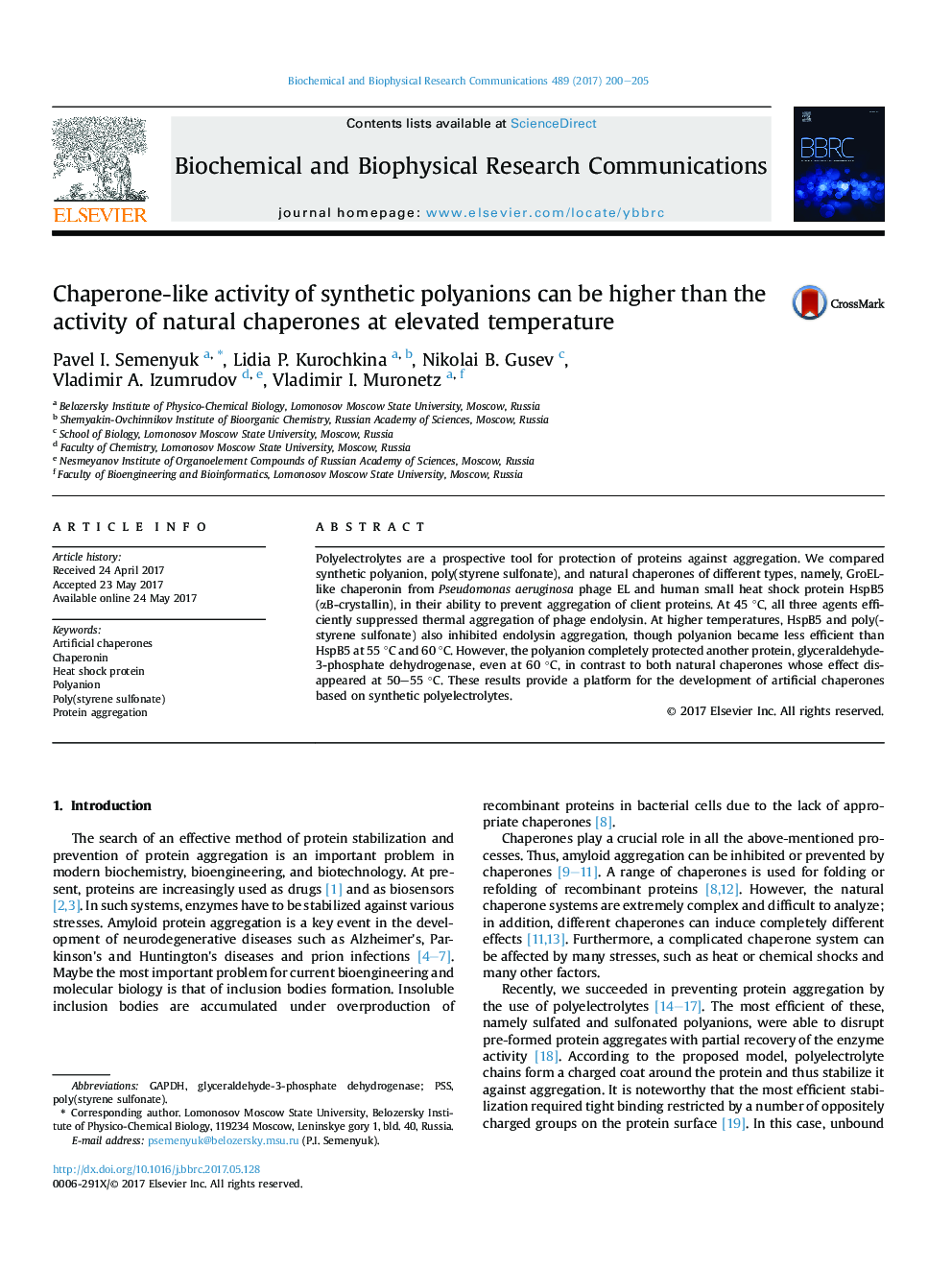| Article ID | Journal | Published Year | Pages | File Type |
|---|---|---|---|---|
| 5505327 | Biochemical and Biophysical Research Communications | 2017 | 6 Pages |
â¢Chaperone-like activity of synthetic polyanion and natural chaperones was compared.â¢The polyanion was more efficient than GroEL-like chaperonin at high temperature.â¢Poly(styrene sulfonate) was more efficient than sHSP in protection of GAPDH.â¢Protective efficiency of the polyanion is specific for different client protein.
Polyelectrolytes are a prospective tool for protection of proteins against aggregation. We compared synthetic polyanion, poly(styrene sulfonate), and natural chaperones of different types, namely, GroEL-like chaperonin from Pseudomonas aeruginosa phage EL and human small heat shock protein HspB5 (αB-crystallin), in their ability to prevent aggregation of client proteins. At 45 °C, all three agents efficiently suppressed thermal aggregation of phage endolysin. At higher temperatures, HspB5 and poly(styrene sulfonate) also inhibited endolysin aggregation, though polyanion became less efficient than HspB5 at 55 °C and 60 °C. However, the polyanion completely protected another protein, glyceraldehyde-3-phosphate dehydrogenase, even at 60 °C, in contrast to both natural chaperones whose effect disappeared at 50-55 °C. These results provide a platform for the development of artificial chaperones based on synthetic polyelectrolytes.
